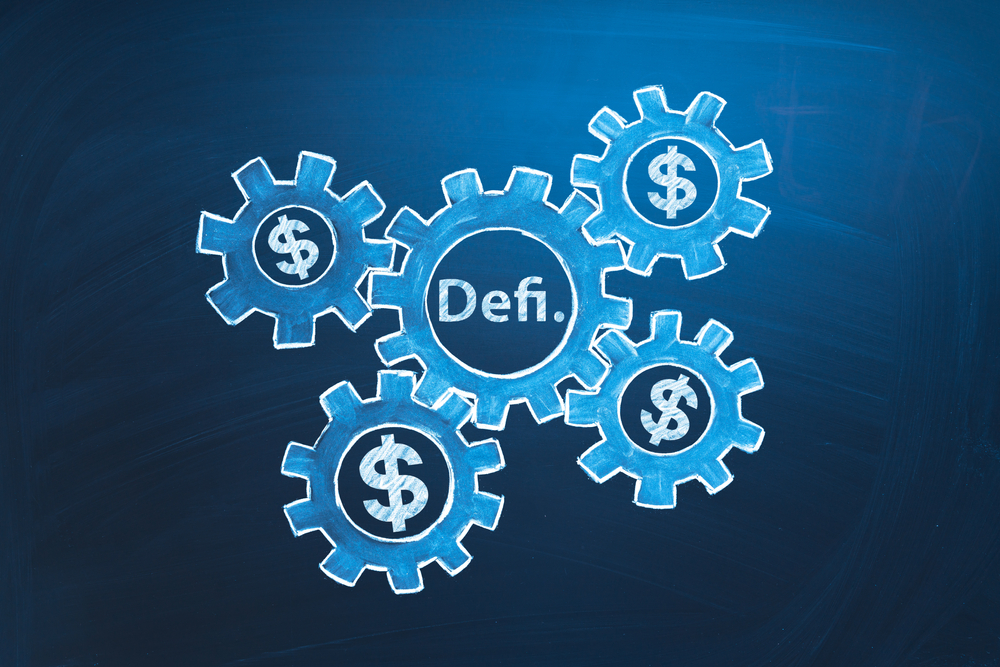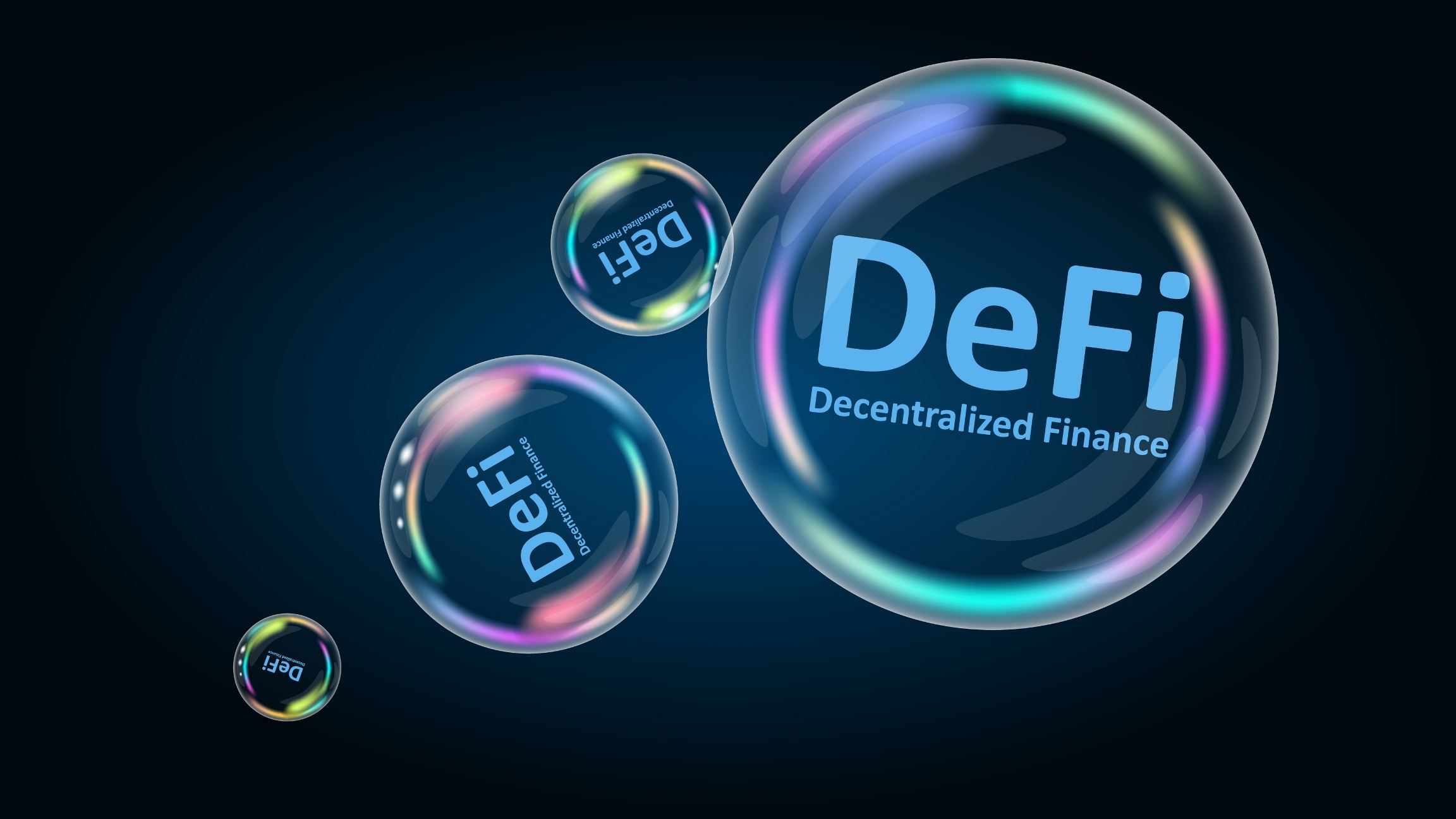DeFi Explained Simply

Ever wondered what DeFi is and why it’s creating such a buzz in the finance world? Imagine a world where financial services are accessible to anyone with an internet connection, without the need for middlemen like banks. Traditional finance often involves high transaction fees, slow processing times, and lack of accessibility for the unbanked. DeFi aims to solve these issues by offering a financial system that’s accessible, transparent, and decentralized. You can participate in global markets, lend or borrow assets, and even earn interest—all without needing a bank account. Let’s understand what DeFi is, how it’s different from regular cryptocurrencies, and explore its risks and rewards. Ready to explore more?
The Problem with Traditional Finance

Understanding why people are turning to DeFi starts with knowing the limitations and pain points of today’s financial systems. Traditional finance often involves:
- High transaction fees
- Slow processing times
- Lack of accessibility for the unbanked
- Centralized control
In many parts of the world, a considerable number of people are excluded from basic financial services. High fees and slow processing times can become significant obstacles, especially for those who need to send money internationally. Many situations can be handled much better if these barriers didn’t exist.
Promises of DeFi
So, how does DeFi promise to solve these issues? By offering a financial system that is:
- Accessible: Anyone with an internet connection can use DeFi platforms.
- Transparent: Transactions are publicly verifiable on blockchains.
- Decentralized: No central authority controls the system; it’s governed by smart contracts.
DeFi opens up opportunities for innovation in finance, enabling services that were previously unimaginable. For example, you can participate in global markets, lend or borrow assets, and even earn interest—all without needing a bank account.
Why You Should Keep Reading
In this article, you will learn:
- What DeFi is and how it works
- How DeFi is different from regular cryptocurrencies
- The risks and rewards associated with DeFi
- The potential future of decentralized finance
Curious about how all this comes together? Keep reading to find out more about the basics of DeFi, its real-world examples, and its transformative potential.
Next up, we’ll delve into the nitty-gritty of what DeFi really is and how it functions. Ready to explore more?
What is DeFi?

Simple Explanation
DeFi, or decentralized finance, is all about creating financial services that operate on public blockchains like Ethereum. Picture this: no banks, no intermediaries—just you and the network handling everything. It’s a game-changer, right?
Key Characteristics
What makes DeFi stand out? Let’s take a look at its main features:
- Decentralization: Unlike traditional finance where banks and institutions control the system, DeFi relies on decentralized networks. This means there’s no single entity in charge.
- Accessibility: Anyone with an internet connection can access DeFi services. No need for a bank account or a good credit score.
- Transparency: Everything on the blockchain is visible to everyone. You can see the transactions happening in real-time.
Real-World Examples
So, how does all this look in the real world? Here are three standout examples:
- Aave: Aave is a decentralized lending platform where you can lend or borrow cryptocurrencies without needing a bank. According to recent data, Aave manages billions in assets, highlighting trust in decentralized lending.
- Uniswap: This decentralized exchange allows users to swap various cryptocurrencies without relying on a traditional exchange. It’s powered by smart contracts, ensuring a seamless and secure transaction process.
- Compound: Another lending protocol, Compound lets you earn interest on your crypto holdings. You supply your crypto to the protocol, and in return, you earn interest—super straightforward!
As DeFi continues to evolve, these platforms are just the tip of the iceberg. Imagine how revolutionary this can be for someone in a developing country where traditional financial infrastructure is lacking.
“DeFi is not just a financial revolution; it’s an equalizer.” – Anonymous
Curious about how DeFi is different from cryptocurrencies like Bitcoin? Stay tuned; the next section will break it down for you.
DeFi vs. Cryptocurrency

Key Differences
So, you might be thinking, “Isn’t DeFi just another form of cryptocurrency?” Well, not quite. While both are intertwined, they serve different purposes. Let’s break it down:
- DeFi: Think of DeFi as a whole financial ecosystem. It includes various financial services like lending, borrowing, and trading, all built on blockchain technology, primarily Ethereum.
- Cryptocurrency: This refers to digital assets like Bitcoin or Ethereum. These are essentially digital money that you can use within the DeFi ecosystem, but they are not financial systems themselves.
In simpler terms, if cryptocurrencies are the money, DeFi is the banking system. You can’t have a bank without money, and you can’t have DeFi without cryptocurrencies.
How They Work Together
Here’s where things get interesting. DeFi and cryptocurrencies are like peanut butter and jelly. They work together to create something truly unique and useful:
- Transactions: Most DeFi platforms rely on cryptocurrencies for operations. For example, you might need Ethereum to pay for transaction fees or to use a DeFi service.
- Lending and Borrowing: Using your cryptocurrency as collateral, you can borrow other assets. Platforms like Aave allow you to lend your tokens and earn interest or borrow against your holdings.
These interactions create a fluid and dynamic financial system that operates 24/7, with no need for traditional banks.
Case Study
To illustrate this synergy, let’s look at a real-world example. Imagine using a DeFi application like Wrapped Bitcoin (WBTC) on the Ethereum blockchain. What happens here is quite fascinating:
- Bitcoin Tokenization: WBTC allows you to convert Bitcoin into an ERC-20 token, essentially bringing Bitcoin into the Ethereum DeFi ecosystem.
- Liquidity and Accessibility: With your WBTC, you can now use Ethereum-based DeFi applications such as Uniswap or Compound. This asset can earn you interest or be used in various DeFi projects.
So, not only do you hold Bitcoin, but you can also leverage Ethereum’s DeFi capabilities by converting it into WBTC. It’s like having the best of both worlds!
“The best way to predict the future is to create it.” – Peter Drucker
Ever wondered how DeFi platforms make money while providing these incredible services? Hold onto that curiosity because we’re about to explore the world of transaction fees, lending, and trading fees next!
How Does DeFi Make Money?

Transaction Fees
Ever wondered how decentralized finance (DeFi) can thrive without the traditional financial institutions? One solid avenue is transaction fees. When users trade on platforms like Uniswap, they pay a small fee for each transaction. Every swap, trade, or liquidity addition incurs a fee. This fee is usually a fraction of a percentage but, due to the volume of transactions, it quickly adds up.
For instance, Uniswap, one of the largest decentralized exchanges, generated around $1 billion in transaction fees in 2020 alone. This goes to show the immense earning potential within the DeFi ecosystem. As more people join, trade, and interact with DeFi platforms, the revenue from these transaction fees continues to grow.
Lending and Interest
The concept of lending and earning interest isn’t new, but DeFi adds a modern twist. Platforms like Aave and Compound allow users to lend their crypto assets to others. In return, they earn interest on these loans. It’s a win-win; lenders earn passive income while borrowers get the funds they need.
Imagine you have some Ethereum sitting in your wallet. Instead of letting it collect virtual dust, you could lend it out on Compound. The platform connects you with borrowers, and you start earning interest immediately.
According to a report by DeFi Pulse, the total value locked in DeFi lending platforms soared past $10 billion in 2020. This showcases how lucrative lending and interest can be. And it’s not just the lenders who benefit; these platforms often have their native tokens, which can also bring in additional revenue through platform fees and token appreciation.
Trading Fees
Decentralized exchanges (DEXs) like Uniswap, Sushiswap, and Balancer play a huge role in the DeFi ecosystem. They facilitate trading without intermediaries, and they make money through trading fees.
Every time a trade is executed on these platforms, the trader pays a fee. Unlike traditional exchanges that set fees at their discretion, DeFi platforms often have fixed fees detailed in their smart contracts. This transparency is part of what makes DeFi attractive.
To give you an example, Uniswap charges a 0.3% fee on each trade. While it might seem small, consider the daily trading volumes that can reach hundreds of millions of dollars. Those fees accumulate into substantial revenue. In fact, during peak times, Uniswap’s daily trading fees have rivaled those of major centralized exchanges like Coinbase.
As the DeFi ecosystem continues to grow and evolve, these revenue streams—transaction fees, lending and interest, and trading fees—form the backbone of how DeFi makes money. But are these benefits without risks? Keep reading to find out more about the potential pitfalls in our next section.
Is DeFi Good or Bad?

Benefits
When talking about DeFi, the benefits sure make it shine brightly. Here are some of the most compelling advantages:
- Accessibility: DeFi opens up financial services to anyone, anywhere. All you need is an internet connection.
- Transparency: Every transaction is recorded on a public ledger, making the system highly transparent.
- Control: Users have full control over their assets without needing a middleman, breaking free from traditional banking restrictions.
As famed entrepreneur Richard Branson once said, “Opportunities are like sunrises. If you wait too long, you miss them.” We’re witnessing that sunrise with DeFi right now.
Risks
But hey, it’s not all sunshine and rainbows. DeFi comes with its risks:
- Faulty Smart Contracts: Smart contracts are self-executing but can have bugs. These errors can lead to significant financial loss.
- Vulnerability to Hacks: DeFi projects can be alluring targets for hackers. Millions have been lost due to vulnerabilities in the system.
- Liquidity Issues: Sometimes it’s hard to convert DeFi assets into cash quickly, posing liquidity challenges.
Understanding these risks is crucial. Remember, no investment is without its challenges.
Real-World Risks and Failures
Real incidents make these risks more tangible:
- DAO Hack: One of the most infamous DeFi failures was the 2016 DAO hack, where $60 million in Ether was stolen due to a vulnerability in the smart contract.
- bZx Hack: In 2020, the bZx protocol saw two significant attacks within days, losing nearly $1 million each time due to different vulnerabilities.
- Harvest Finance Exploit: In October 2020, a hacker drained $24 million from the Harvest Finance DeFi project, exploiting a vulnerability in its code.
These examples serve as cautionary tales. Always do thorough research before diving into any DeFi project.
Curious to learn more and deepen your understanding? Stay tuned for the upcoming section where I’ll share valuable resources to help you navigate the DeFi landscape effectively.
Resources for Learning More

Additional Reading
Want to dig deeper into the world of DeFi? There’s a wealth of information out there to help you expand your knowledge. A fantastic starting point is N26’s comprehensive guide on DeFi. It’s packed with practical insights that break down the complexities of decentralized finance.
Another excellent resource is Investopedia. Known for its thorough financial explanations, their DeFi section offers detailed articles that can make even the most intricate topics easy to understand.
For those looking to link DeFi with broader investment strategies, Bankrate provides a solid overview with a focus on how DeFi fits into the larger financial ecosystem.
Learning more about DeFi doesn’t stop here. Imagine the potential benefits you could unlock by diving deeper into these valuable resources. What new opportunities could you uncover in the ever-evolving DeFi landscape? Stay tuned for the next part, where we wrap up our discussion and look ahead to what’s next in DeFi. I’ll help you take actionable steps and explore even more exciting aspects of this financial revolution!
Conclusion and Final Thoughts

Recap
So there you have it! We’ve explored what DeFi is, how it operates, and its key differences from traditional cryptocurrencies. We’ve also looked into how DeFi makes money, its benefits, and the risks that come alongside it. All these pieces paint a picture of an exciting yet complex landscape that’s reshaping the future of finance.
Future of DeFi
What’s next for DeFi? The future looks promising, but it’s not without its challenges. As technology advances, we can expect more innovative financial services that provide greater accessibility and inclusivity. However, the hurdles of regulation, security, and market liquidity will need to be tackled. Institutions are slowly warming up to the idea, and with increased adoption, DeFi has the potential to become a cornerstone of the financial ecosystem.
Your Next Steps
Curious to see what DeFi can do for you? Why not start by dipping your toes into a DeFi application? Platforms like Aave, Uniswap, and Compound are great places to begin. For further reading, check out the resources we’ve recommended earlier. Knowledge is power, and the more you know, the better equipped you’ll be to navigate this thrilling new world.
Closing Note
Thanks for joining me on this journey through the world of DeFi. I’m excited to hear your thoughts, so don’t hesitate to share them in the comments below. If you have any questions or need more insights, feel free to connect with me. Let’s keep the conversation going!
